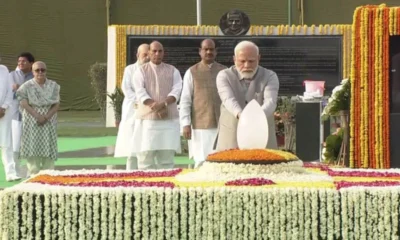Entertainment
Animal Box office collection: Ranbir Kapoor film crosses Rs 784 crore worldwide
The official account of Animal took to X(Formerly Twitter) and shared a poster of Animal. It read Cinematic phenomenon! 14-day worldwide gross Rs 784.45 crore. A part of the caption read, the #Animal beast continues to dominate.

Entertainment
Govinda’s Avatar: Fire and Ash cameo clips go viral, truth behind the AI-generated videos
AI-generated videos claiming Govinda’s cameo in Avatar: Fire and Ash have gone viral, but the actor does not appear in the film.
Entertainment
The Odyssey trailer: Christopher Nolan unveils first look of epic journey led by Matt Damon
Christopher Nolan has released the first trailer of The Odyssey, offering a glimpse into Matt Damon’s epic journey home after the Trojan War.
Entertainment
Dhurandhar box office day 17: Ranveer Singh film crosses Rs 555 crore, enters all-time top 10
Dhurandhar crosses Rs 555 crore at the Indian box office on day 17, overtaking Animal and entering the all-time top 10 films list.
-

 Latest world news14 hours ago
Latest world news14 hours agoTarique Rahman returns to Dhaka after 17 years, massive crowd greets BNP leader
-

 India News19 hours ago
India News19 hours agoKarnataka bus-truck collision on NH-48 leaves 10 dead as sleeper bus catches fire
-

 India News19 hours ago
India News19 hours agoCried over Gaza, not a word on Bangladesh: Yogi Adityanath attacks opposition in UP Assembly
-

 Latest world news11 hours ago
Latest world news11 hours agoKhaleda son Tarique Rahman arrives to rapturous welcome in Bangladesh
-

 India News19 hours ago
India News19 hours agoChristmas 2025 wishes for WhatsApp and Instagram status to share joy and warmth
-

 India News19 hours ago
India News19 hours agoPM Modi pays tribute to Atal Bihari Vajpayee at Sadaiv Atal, says leadership is defined by conduct
















